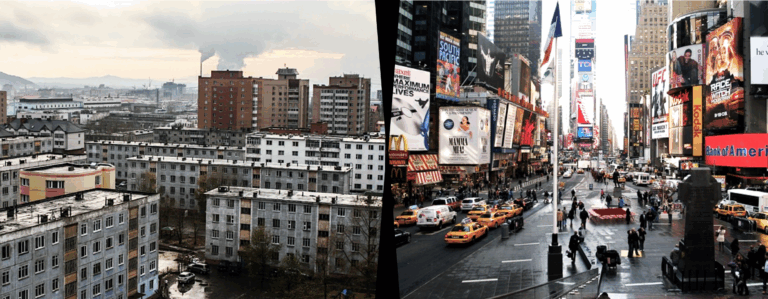What drives business investment? Even after the precipitous decline in the price of oil in the second half of 2014, the answer in Canada is still natural resources. As newly released data from Statistics Canada shows, in 2016 business investment per capita was highest in the energy-producing provinces; around $21,400 in Newfoundland and Labrador, $15,800 in Alberta, and $11,900 in Saskatchewan. By comparison, British Columbia came in at $5,300, Ontario at $4,700, and Quebec and the Maritimes did even worse.
Investment matters because it drives job creation and makes workers more productive, which raises wages. So it’s bad news for Ontarians and Quebeckers that their provinces are among Canada’s laggards when it comes to investment growth. Real business investment increased by 52 percent in Alberta and 82 percent in Saskatchewan from 2000 to 2016 despite sharp declines in the last couple years. By comparison, real investment growth was only 24 percent in Ontario and 15 percent in Quebec over the same time period.
As Mark Milke noted recently in the Financial Post in his analysis of the latest census data, resource-rich provinces have seen not only high levels of business investment growth, but also high income growth and declining poverty rates. “Snubbing opportunities in developing natural resources,” he concluded, “comes at the expense of additional jobs and better incomes for the poor and middle-class working families.”
Sadly, even governments that have grown fat off the return from resource investment habitually forget this lesson. Consider the experience of Alberta and Saskatchewan before the oil price decline. From 2000 to 2007, business investment grew by 75 percent in Alberta compared to 39 percent in Saskatchewan. But from 2007 to 2014 the positions flipped, with Saskatchewan’s 104 percent investment growth surpassing Alberta’s 39 percent.
Taxes help explain how this happened. In 2000, the Alberta government appointed a committee to review the province’s business taxes. As the provincial budget delivered the following year noted, “the Committee concluded that Alberta should respond to the world-wide trend to lower corporate income taxes. If we don’t, we risk losing increasingly mobile capital and highly skilled people.” Alberta eliminated the financial institutions capital tax that year and began lowering its 15.5 percent corporate tax rate, which fell to 10 percent by 2006. Business investment boomed.
Likewise in Saskatchewan, the period with the fastest growth in business investment also coincided with the reduction of economically damaging taxes. Investment began rising in 2005, then really took off in 2006 when the then-NDP government announced the elimination of the corporate capital tax, an increase in the small business pre-tax threshold, and a reduction in the corporate income tax rate from 17 percent to 12 percent by 2008.
Unfortunately, today Alberta, Saskatchewan and most other Canadian governments are moving in the wrong direction. Just look at TransCanada Pipelines’ cancelled Energy East project. Sure the low price of oil was a factor in the $15.7 billion project’s demise, but after Ottawa browbeat the National Energy Board into including upstream and downstream carbon emissions in its assessment of the project, TransCanada also blamed “existing and likely future delays resulting from the regulatory process, the associated cost implications” and other challenges.
Alberta’s NDP government complained loudly about the NEB’s “historic overreach”. But that was just the pot calling the kettle black. Thanks in large part to its own tax and regulatory impositions, oil sands investment has fallen by half in just two years, from $23.4 billion in 2015 to an estimated $12.1 billion this year. A 2016 survey by the Fraser Institute found energy executives’ perceptions of Alberta’s policies worsened significantly from 2014 to 2016, and they showed it by cutting investment.
On taxes, the NDP-Green coalition government in British Columbia is now emulating neighbouring NDP Alberta in raising corporate taxes. They’ve also announced plans to make the province’s carbon tax more expensive. And last year, Newfoundland and Labrador tacked another point onto its corporate tax and New Brunswick – where business investment is among the lowest in Canada – made its own situation worse by hiking its corporate tax from 14 percent to 16 percent.
In which provinces are measures being taken to encourage business investment? Seemingly none. Even in Saskatchewan, where the incumbent Saskatchewan Party government is generally friendly toward natural resource development, a corporate tax cut announced in the 2017 budget last spring was recently reversed. Alas, most provinces and certainly the federal government – which is guaranteeing a more burdensome tax bill tomorrow with its profligate spending today – seem determined to drive investment away.






